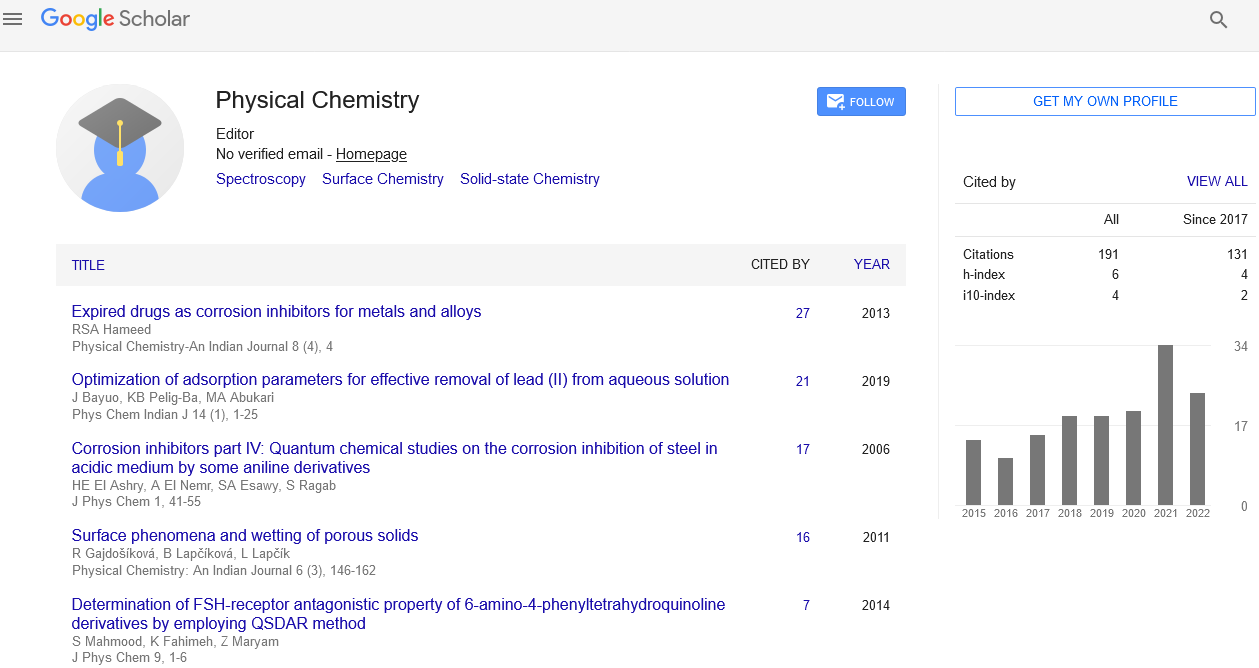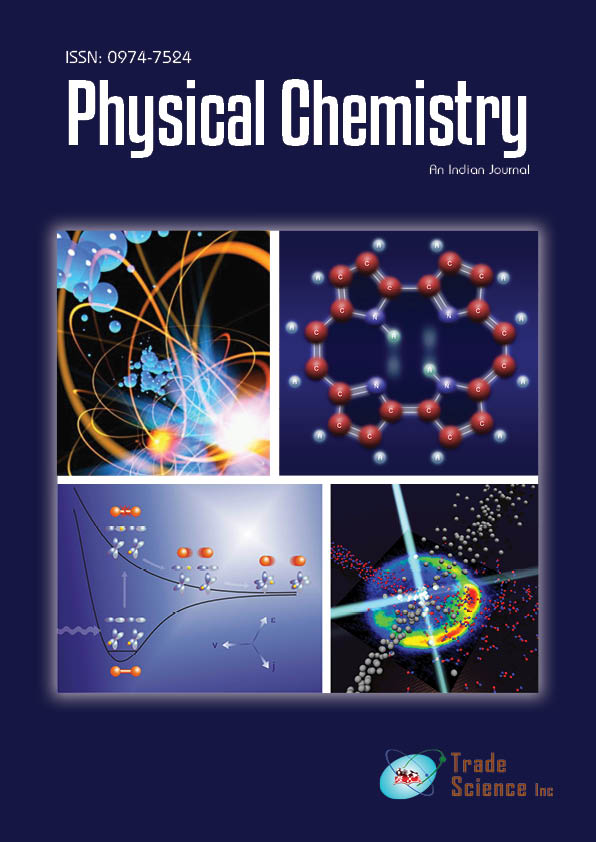Viewpoint
, Volume: 16( 6)The Effect of a Surface-Stabilizing Agent on the Antibacterial and Antifungal Properties of Silver Nanoparticles
Stefan Paul *
- *Correspondence:
- Stefan Paul
Editorial Office,
Physcal Chemstry: An Indian Journal,
UK,
E-mail: physicalchem@journalres.com
Received: November 11, 2021; Accepted: November 19, 2021; Published: November 29, 2021
Citation: Paul S. The Effect of a Surface-Stabilizing Agent on the Antibacterial and Antifungal Properties of Silver Nanoparticles. Phys Chem Ind J. 2021;16(6):160.
Abstract
Silver nanoparticles (AgNPs) produced with biologically active chemicals appear to have particularly important biocidal characteristics for biological and medicinal applications. The goal of this study was to analyse and contrast the antibacterial and fungicidal capabilities of fifteen different AgNPs. The fundamental hypothesis was that the biological activity of AgNPs with similar size distributions, morphologies, and ion release profiles is influenced by the characteristics of stabiliser molecules adsorbed on their surfaces. As models for two types of bacterial cells, Escherichia coli and Staphylococcus aureus were used. According to the research, larger AgNPs are more biocidal than smaller ones. Positively charged arginine-stabilized AgNPs (ARGSBAgNPs) were found to be the most biocidal of all the nanoparticles studied. Negatively charged EGCGAgNPs made with ()-epigallocatechin gallate have the most potent antifungal activity (EGCG). It was discovered that by using a specific stabilising agent, AgNP toxicity can be tuned to target specific infections.
Introduction
Silver's biocidal capabilities are well recognised. It has bactericidal, fungicidal, and virucidal capabilities in any form it takes, including silver nanoparticles, silver ions (Ag+ ), silver complexes, and metallic silver (Ag0 ). (AgNPs). Silver compounds have a wide range of applications due to their strong biological activity, particularly in biology and medicine. Silver-containing materials are utilised to inhibit bacteria colonisation on prosts and to minimise infection during burn therapy and arthroplasty. Because of the high surface-to-volume ratio, biological efficiency of silver in the form of AgNPs is higher than that of ordinary (bulk) silver . The biocidal action of silver ions and AgNPs against bacterial and eukaryotic cells is evident. Silver ions and AgNPs are thought to be more biocidal to prokaryotes than to eukaryotic cells, resulting in a therapeutic window in which mammalian tissue is spared while bacteria are killed. AgNPs are less chemically reactive than silver ions, which interact with a range of biomolecules within a cell, including nucleic acids, cell wall components, metabolic enzyme sulfhydryl groups, and sulfur-containing cell components like glutathione. It's worth noting, however, that AgNPs are a source of silver ions.
Oxidative breakdown of AgNPs occurs, resulting in the constant release of silver ions. The rate of silver ion leaching from AgNPs is affected by external factors as well as the physicochemical properties of the particles. Another feature that encourages their widespread use is the ability to shape AgNPs' biological activity through regulation of their physicochemical qualities. Smaller AgNPs have been shown to be more harmful than larger AgNPs. Two major aspects are linked to this dependency. To begin with, AgNPs of smaller sizes infiltrate cells and microorganisms more efficiently. Furthermore, smaller AgNPs are more susceptible to oxidative dissolution and, as a result, generate more silver ions in a shorter amount of time than bigger AgNPs. The form of AgNPs is the next important component to consider when considering biocidal capabilities. Sphere-shaped, rodshaped, and truncated triangular AgNPs were studied for their antibacterial efficacy against Escherichia coli.
The researchers discovered that truncated triangular AgNPs had the best biocidal activity, followed by nanospheres and nanorods. Specific, high-molarmass molecules of surfactants or polymers promote and guide the production of anisotropic AgNPs. Shape-controlling molecules are frequently deposited on the surfaces of AgNPs, and they, like silver, have biological activity. As a result, AgNP surface chemistry is an important factor in defining the biocidal activity of the entire nanometric system. Negatively charged AgNPs stabilised by inorganic anions are common. AgNPs coated by organic compounds with protonation and deprotonation-capable moieties, on the other hand, can be negatively or positively charged. The surface charge of AgNPs affects the creation of a protein corona around nanoparticles, as well as their subsequent interactions with the cell membrane, according to several scientific findings. Based on this research, it can be concluded that compounds utilised as AgNP reducers and stabilisers are important determinants in predicting biological activity. Reducing and stabilising substances can have an indirect effect on AgNP toxicity, for example, if they increase silver ion release or AgNP penetration through biological membranes. Stabilizing chemicals adsorbed on the surfaces of AgNPs, on the other hand, can act directly on cells and microbes. AgNPs' ability to discriminate between normal and pathogenic cells, as well as beneficial and harmful microorganisms, is highly desired. Previously, it was thought that AgNPs made from plant extracts in green synthesis procedures were highly harmful to pathogens but practically inert to normal cells. More advanced research indicated that the desired selectivity of AgNPs can only be accomplished by using specific bioactive compounds to control the functionalization of AgNP surfaces.
Regardless of these facts, functionalization of AgNPs is normally carried out using well-defined AgNPs generated using traditional synthesis techniques, such as the citrate process or Turkevich's method. Biocidal capabilities of AgNPs generated by traditional techniques of synthesis are seldom assessed in contemporaneous and comparative testing with Gram-positive and Gram-negative bacteria, as well as fungus, according to recent literature publications. As a result, our understanding of AgNPs' biocidal characteristics is restricted.

